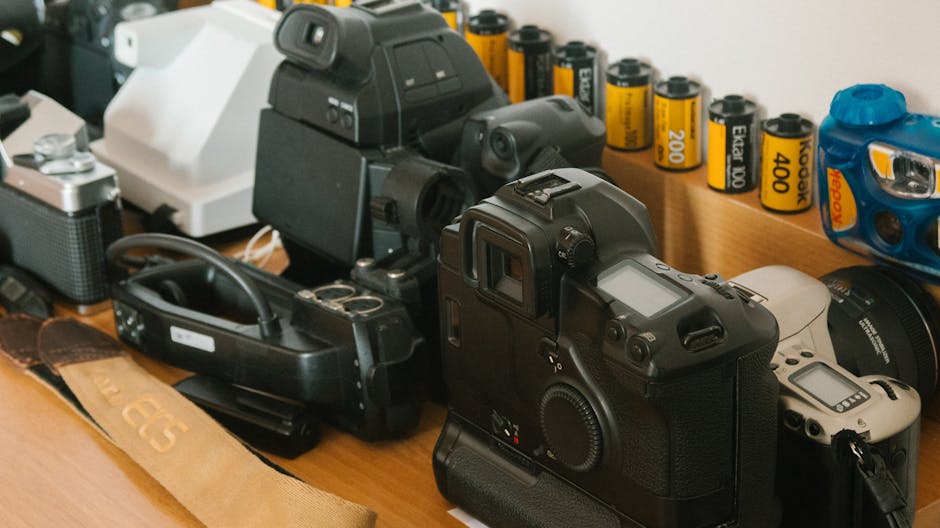The History and Evolution of SLR Digital Cameras
The world of photography has undergone a tremendous transformation over the decades, evolving from simple box cameras to sophisticated digital Single-Lens Reflex (SLR) cameras. Understanding this journey can provide valuable insights into how modern photography has reached its current zenith. In this article, we will take a detailed look at the history and evolution of SLR digital cameras, highlighting key milestones, innovations, and trends that have shaped this technology.
The Dawn of SLR Cameras
SLR (Single-Lens Reflex) cameras have been around for quite some time. The first SLR cameras were introduced in the early 20th century, and they brought a revolutionary change to the way photographers composed and captured images. The primary characteristic of an SLR camera is its use of a mirror and prism system, which allows the photographer to see exactly what the lens sees through the viewfinder.
Early Innovations and Designs
The first commercially successful SLR camera was the Exakta, produced by Ihagee in Germany in 1933. It featured a waist-level viewfinder and interchangeable lenses, setting the stage for future developments. However, it wasn’t until the 1950s that SLR cameras became more user-friendly with the introduction of the pentaprism, which allowed for eye-level viewing.
The Transition to Digital SLR Cameras
The transition from film to digital was a monumental shift in the world of photography. The first digital SLR (DSLR) camera was the Kodak DCS 100, introduced in 1991. It was built around a Nikon F3 body and had a 1.3-megapixel sensor. This marked the beginning of a new era, blending traditional SLR design with digital technology.
Advancements in Sensor Technology
One of the most significant advancements in DSLR technology has been the improvement in sensor quality. Early sensors were limited in resolution and dynamic range. Modern sensors, however, offer incredible detail and color accuracy. For instance, the Canon EOS 5DS, released in 2015, boasts a 50.6-megapixel sensor, providing photographers with unparalleled image quality.
The Role of Autofocus Systems
Autofocus (AF) systems have also seen significant improvements. Early DSLRs had basic AF systems with limited focus points. Today, cameras like the Nikon D850 feature advanced AF systems with 153 focus points, ensuring sharp and accurate focus even in challenging conditions.
The Rise of Mirrorless Cameras
While DSLRs have dominated the market for years, mirrorless cameras have emerged as strong contenders. Mirrorless cameras omit the mirror and optical viewfinder found in DSLRs, resulting in a more compact and lightweight design. The first successful mirrorless camera was the Panasonic Lumix DMC-G1, released in 2008.
Benefits of Mirrorless Technology
Mirrorless cameras offer several advantages over traditional DSLRs:
1. Compact Size: Without the need for a mirror box, mirrorless cameras are often smaller and lighter.
2. Electronic Viewfinders: These provide a real-time preview of the image with exposure adjustments, making it easier to compose shots.
3. Faster Shooting: The absence of a mirror allows for faster continuous shooting speeds.
Popular Mirrorless Models
Some popular mirrorless cameras include the Sony Alpha a7R IV, known for its 61-megapixel sensor, and the Fujifilm X-T4, lauded for its excellent image quality and versatile features.
Current Trends and Future Directions
The world of SLR and mirrorless cameras continues to evolve. Here are some current trends and future directions in the industry:
AI and Computational Photography
Artificial intelligence (AI) is playing an increasingly important role in modern cameras. Features like subject tracking, scene recognition, and automated settings adjustments are becoming standard. Computational photography, which uses algorithms to enhance images, is also gaining traction.
Improved Connectivity
Modern cameras are now equipped with advanced connectivity options, including Wi-Fi, Bluetooth, and NFC. This allows for seamless transfer of images to other devices and instant sharing on social media platforms.
Environmental Sustainability
As awareness of environmental issues grows, camera manufacturers are focusing on sustainability. This includes using eco-friendly materials, reducing waste in production, and creating energy-efficient products.
Conclusion
The history and evolution of SLR digital cameras is a fascinating journey of innovation and technological advancement. From the early days of mechanical SLRs to the modern era of high-resolution DSLRs and mirrorless cameras, the field of photography has come a long way. As technology continues to advance, we can expect even more exciting developments in the future.
Whether you’re a professional photographer or an enthusiast, understanding the history and evolution of SLR digital cameras can enhance your appreciation for this incredible art form. As you explore the latest models and features, remember the rich heritage that has paved the way for today’s cutting-edge technology.
Stay tuned for more updates and insights into the world of photography!
To anybody wanting to take better photographs today: Click Here!

